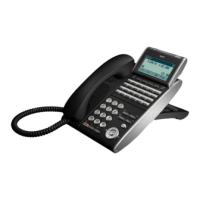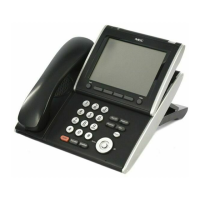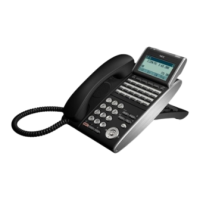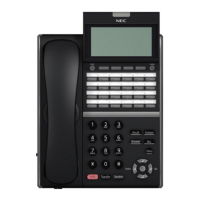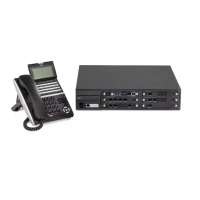Dial Types Dial Type Description Related Program
2 Extension Number 11-02: Extension Numbers
11-04: Virtual Extension Numbers
11-07: Department Calling Group Numbers
3 Trunk Access Code 11-09: Trunk Access Code.
4 Special Trunk Access 11-09: Trunk Access Code.
5 Operator Access 20-17: Operator’s Extension
6 ARS/F-Route Access 44-xx
8 Networking 10-12: CPU Network Setup
10-20: LAN Setup for External Equipment
10-27: IP System ID
--Changing the Dial Type for a range of codes can have a dramatic affect on how your system
operates. Assume, for example, the site is a hotel that has room numbers from 100-399. In order to
make extension numbers correspond to room numbers, you should:
• In Program 11-02, reassign extension numbers on each floor from 100 to 399.
(Other applications might also require you to change entries in Program 11-10 through 11-16.)
Example:
This example shows two separate extension numbers assigned for the networked systems. System A
dials 4xx to reach System B, while system B dials 3xx to reach System A.
System – A System – B
Dial “3x”:
Dial “1x”:
Digit “3”
Type 2 (Intercom)
Dial “3x”:
Dial “1x”:
Digit “3”
Type 8 (Networking)
System ID “1”
Dial “4x”:
Dial “2x”:
Digit “3”
Type 8 (Networking)
System ID “1”
Dial “4x”:
Dial “2x”:
Digit “3”
Type 2 (Intercom)
The following example shows a unified extension number assignment. All users dial a 4-digit
extension number (2xxx) to reach anyone within the network, regardless of which system they are
connected. System A users have extension numbers 20xx, while system B users have extension
numbers 23xx.
Programming System – A System – B
Program 11-01 Dial “2”:
2x = Digit “0”, Type “0”
20 = Digit “4”, Type 2 (Intercom)
23 = Digit “4”, Type 8 (Network), System ID “1”
Dial “2”:
2x = Digit “0”, Type “0”
20 = Digit “4”, Type 8 (Network), System ID “1”
23 = Digit “4”, Type 2 (Intercom)
Program 11-02 Port 1 = extension number 2001
Port 1 = extension number 2001
Port 3 = extension number 2003, etc.
Port 1 = extension number 2001
Port 1 = extension number 2001
Port 3 = extension number 2003, etc.
It is also possible to use F-Route to select the correct node for the destination extension number. The
example below shows a numbering scheme where the user must dial an additional digit 7 before the
extension number, this is routed by F-Route to the correct node and analyzed again in the F-Route
tables at the remote SL2100.
When using F-Route you must translate the dialed number (e.g 52301 translates to 2301) otherwise
the call will not ‘exit’ from the F-Route tables.
SL2100
ISSUE 1.0
13-10
AspireNet

